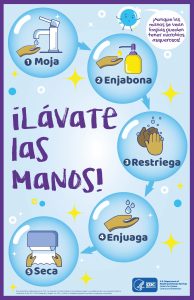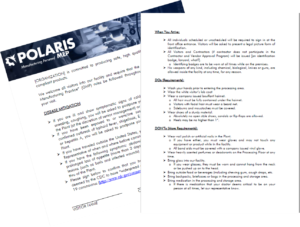“Preventing the spread of disease is just a part of what you do every shift, every day, to take care of your employees and customers in the food industry.”
That’s how Polaris MEP Project Manager Chris Cinieri explains why the guidelines are so strict for food and beverage … and why this manufacturing sector offers so many “best practices” in light of the COVID-19 coronavirus.
Three Food Manufacturing Protocols Relevant to All
 1. Hand-washing at every entry point.
1. Hand-washing at every entry point.
Food and beverage facilities are planned so that there are stations where hands can be washed at every spot where people walk from outside the plant to inside.
If your site layout doesn’t have enough sinks close to the line and plumbing is an issue, place a hand sanitizer dispenser. The key is to make it easy to wash up before people get close to the product.
2. Consider your product and the environment around the plant.
Gloves, hair nets and beard nets are a must no matter what in food and beverage production. Depending on the food, lab coats prevent cross contamination.
If your product is super-sensitive, require masks as well. And, if the area around your manufacturing facility can’t be controlled, provide shoe covers or mats that clean off contaminants before people get close to the product.
3. Attention!
Food manufacturers have various ways to capture the attention of workers. Many plants have marked paths through their facility so that workers cannot advance without stopping at a sanitizing station. Posters detail the required process for cleaning hands.
Chris says there are higher-tech ways to ensure regulated, standardized cleanliness.
 For example, automated handwashing systems save time, reduce water and waste, and remove more contaminants. (They also cut down on the number of workers singing “Happy Birthday” for 20 seconds!)
For example, automated handwashing systems save time, reduce water and waste, and remove more contaminants. (They also cut down on the number of workers singing “Happy Birthday” for 20 seconds!)
Downloadable Resource: Visitor Policy Template
Visitors won’t have been trained the way the average manufacturing worker has been. An additional “best practice” is to set out your hygiene policies in writing and provide these to anyone wanting access to the plant.
What best practices can you share? Please comment below.

